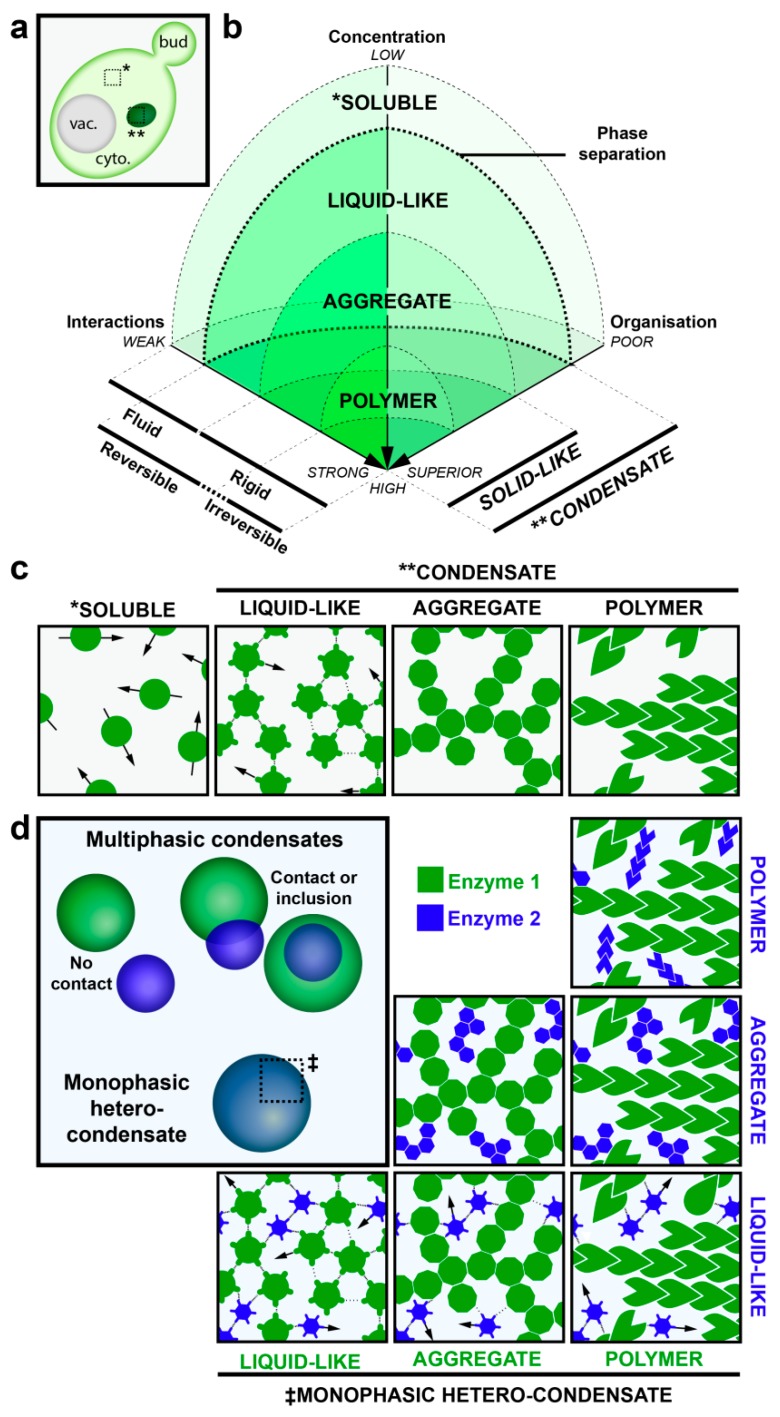Figure 1.
Biophysical properties of protein condensates. (a) Schematic representation of phase separation of proteins in yeast. Phase separation allows components to undergo a transition from soluble (*), diffuse localization to one or a few molecular condensates (**) that appear as foci in light microscopy [43,44]. (b,c) This phase transition and the type of condensates depend on three component properties: The concentration, the strength of component-component interaction and the intrinsic organization. Phase transition occurs when components reach a critical saturation due to increases of local concentrations and/or augmentation of component-component interactions relative to solvent-component interactions. Weak electrostatic intermolecular interactions are more likely to lead to liquid-like droplets which require little energy input to dissolve and thus components in these condensates are quite mobile. Stronger intermolecular interactions generate solid-like foci which require a high energy input to dissolve and thus components of these condensates acquire a more rigid aspect. The level of organization within the solid-like condensates distinguishes aggregates, unorganized condensates, from polymers, which are well organized. (d) Condensates can contain multiple components (hetero-condensate) and can possess different molecular organizations (multi-phasic, ‡), as illustrated.

